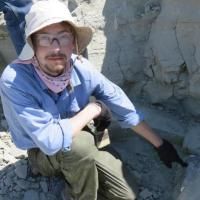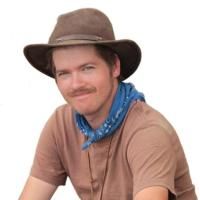A new fully automated approach for aligning and comparing shapes.
Date
2015-01
Journal Title
Journal ISSN
Volume Title
Repository Usage Stats
views
downloads
Citation Stats
Abstract
Three-dimensional geometric morphometric (3DGM) methods for placing landmarks on digitized bones have become increasingly sophisticated in the last 20 years, including greater degrees of automation. One aspect shared by all 3DGM methods is that the researcher must designate initial landmarks. Thus, researcher interpretations of homology and correspondence are required for and influence representations of shape. We present an algorithm allowing fully automatic placement of correspondence points on samples of 3D digital models representing bones of different individuals/species, which can then be input into standard 3DGM software and analyzed with dimension reduction techniques. We test this algorithm against several samples, primarily a dataset of 106 primate calcanei represented by 1,024 correspondence points per bone. Results of our automated analysis of these samples are compared to a published study using a traditional 3DGM approach with 27 landmarks on each bone. Data were analyzed with morphologika(2.5) and PAST. Our analyses returned strong correlations between principal component scores, similar variance partitioning among components, and similarities between the shape spaces generated by the automatic and traditional methods. While cluster analyses of both automatically generated and traditional datasets produced broadly similar patterns, there were also differences. Overall these results suggest to us that automatic quantifications can lead to shape spaces that are as meaningful as those based on observer landmarks, thereby presenting potential to save time in data collection, increase completeness of morphological quantification, eliminate observer error, and allow comparisons of shape diversity between different types of bones. We provide an R package for implementing this analysis.
Type
Department
Description
Provenance
Citation
Permalink
Published Version (Please cite this version)
Publication Info
Boyer, Doug M, Jesus Puente, Justin T Gladman, Chris Glynn, Sayan Mukherjee, Gabriel S Yapuncich and Ingrid Daubechies (2015). A new fully automated approach for aligning and comparing shapes. Anatomical record (Hoboken, N.J. : 2007), 298(1). pp. 249–276. 10.1002/ar.23084 Retrieved from https://hdl.handle.net/10161/18083.
This is constructed from limited available data and may be imprecise. To cite this article, please review & use the official citation provided by the journal.
Collections
Scholars@Duke

Douglas Martin Boyer

Gabriel Yapuncich
I hail from the great mountain states of Montana (the state of my birth) and Wyoming (the state of my childhood). I have a bachelor's degree in English literature from the University of Wisconsin and a bachelor's degree in the evolutionary biology from Columbia University. I completed my PhD in evolutionary anthropology at Duke University in March 2017, working with Dr. Doug M. Boyer. I have taught gross and microanatomy to Duke University School of Medicine students since 2018. In 2021, I joined the DUSOM MD program as an Assistant Professor of the Practice of Medical Education and Director of Accreditation and Continuous Quality Improvement.

Ingrid Daubechies
Unless otherwise indicated, scholarly articles published by Duke faculty members are made available here with a CC-BY-NC (Creative Commons Attribution Non-Commercial) license, as enabled by the Duke Open Access Policy. If you wish to use the materials in ways not already permitted under CC-BY-NC, please consult the copyright owner. Other materials are made available here through the author’s grant of a non-exclusive license to make their work openly accessible.
